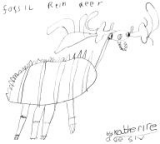An Appraisal of the Utility of a Chocolate Teapot
Simon Bradshaw, Amanda Baker, Bridget Bradshaw, John Bray, Gordon Brignal, David Clements & Del Cotter
THE CHOCOLATE teapot remains popular as a general comparative standard for the failure of an object to perform in accordance with its intended function, rivalled only by its close relative (in terms of composition, if not morphology), the chocolate fireguard. However, whilst numerous items are colloquially labelled as being ‘as useful as a chocolate teapot', there does not appear to be any objective standard for the usefulness, or indeed uselessness, of a chocolate teapot itself. In the absence of any British, European or ANSI Standard, Def Stan or MIL-STD for this important but poorly-specified reference item, it was decided to conduct an independent assessment of exactly how much use one of them was. As well as filling an significant gap in the standards literature, it was felt that this study would add to the body of work published in the Annals of Improbable Research on the scientific evaluation of common metaphors (Sandford, 1995; Paskevich and Shea, 1995; Dubik and Wood, 1995; collected in Abrahams, 1998).
Materials and Methods
The first step in this research programme was the acquisition of a chocolate teapot. Common usage of this term is frustratingly vague, in that neither the volumetric capacity of the reference standard teapot or the type of chocolate used are specified. However, the Cheltenham branch of Marks and Spencer PLC were able to supply a chocolate teapot; in the absence of any alternative samples for evaluation, this example was taken as representative of chocolate teapots in general.
An initial physical examination and comparison with a reference (thermosetting plastic) teapot immediately revealed a number of shortcomings in the test item that would seriously compromise its fitness for use. Its capacity was rather low, being visually estimated as approximately 0.3 litre, or two medium mugs of tea. The vagueness and subjective nature of this estimate were due to the second, and more significant deficiency evident in the chocolate teapot: the absence of any apertures for filling or pouring. Although the chocolate teapot clearly featured a ‘lid' and ‘spout', these were solidly moulded into the overall contiguous shell structure and made no provision for the adding of teabags or hot water or for the dispensing of tea.
In order that a practical evaluation of the chocolate teapot could be made it was therefore necessary to mechanically modify it to more closely resemble a standard teapot. Use of a thermally enhanced cutting implement allowed the moulded ‘lid' to be detached, whilst a similarly-heated probe was used to perforate the ‘spout' (Fig 1).

Fig 1
Following modification, the chocolate teapot was deemed suitable for the test central to the assessment of its utility: the preparation of a cup of tea. Additional equipment used for this experiment comprised a Sainsbury's round tea bag (Fig 2) and 400 ml of consumer-grade H2O heated to approx 370 K (97°C).

Fig 2
Given that the general terms used to describe chocolate teapots suggested that the test item would probably not perform particularly well, it was placed in a metal containment vessel prior to commencement of the test. The lid was then removed and the teabag inserted, followed by the addition of 200 ml of H2O at time T=0 (Figs 3, 4).

Fig 3

Fig 4
Experimental Results
Events started to diverge from the course expected of a standard teapot in a very short timescale. The first evidence of loss of containment was observed at approximately T+5s, in the form of a major leak in the vicinity of the handle (Fig 5). By T+10s major structural failure was clearly in progress (Fig 6).

Fig 5

Fig 6
This had reached catastrophic proportions by T+15s, with total loss of H2O containment (Fig 7).

Fig 7
Whilst the vented liquid was not subjected to any chemical or taste analysis, it was clear from its lack of colour and brief exposure to the tea bag that the desired conversion to tea had not taken place (Fig 8).

Fig 8
Conclusions
On the basis of this test we felt it safe to conclude that, in respect of its suitability for the role that its design suggests, a chocolate teapot is of no use at all. As such, such an item should serve as an excellent baseline of uselessness against which to compare other, similarly dysfunctional, items. However, it should be noted that if a wider view of possible functional roles is taken, the object of our experiments is not completely without use, as was subsequently demonstrated by the principal investigator (Fig 9).

Fig 9
References
Abrahams, M. (1998) The Best of Annals of Improbable Research New York, W H Freeman & Co
Dubik, M. and Wood, B. ‘How Dead Is a Doornail?' (1995), Annals of Improbable Research 1:6
Paskevich, P.A. and Shea, T.B. (1995) ‘The Ability of Woodchucks to Chuck Cellulose Fibers' Annals of Improbable Research 1:4
Sandford, S.A. (1995) ‘Apples and Oranges: A Comparison' Annals of Improbable Research 1:3
"Every time you use the word ‘fillo', you're on his shit list for another two issues."
|
Previous Article |
Next Article |
![[Plokta Online]](../onlinelogo.jpg)


